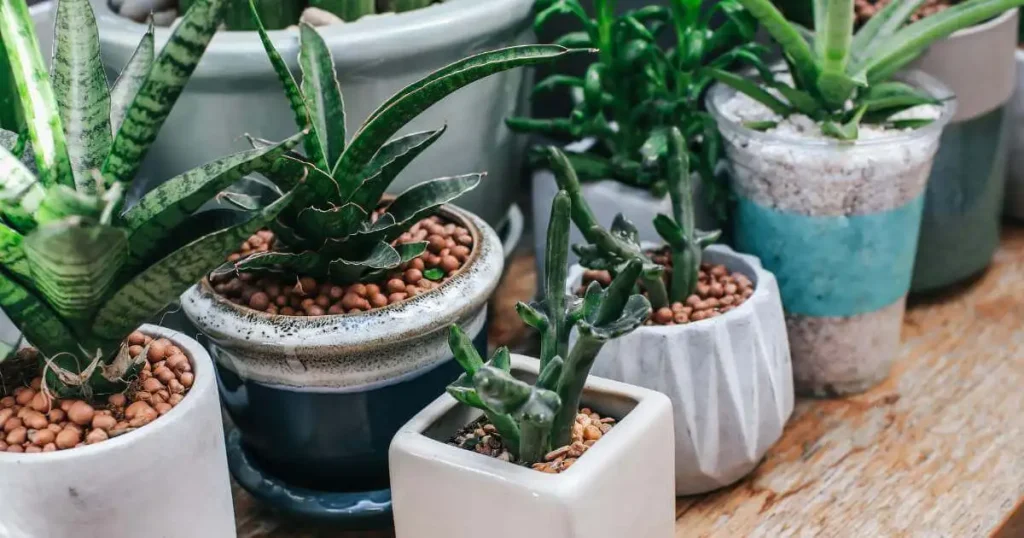The air inside our homes can sometimes be more polluted than the outside air. This is because of dust, chemicals from cleaning products, and even some types of furniture that can release toxins. Breathing in this polluted air can make us feel sick, cause headaches, or worsen allergies.
Indoor plants are incredible natural air purifiers, their leaves and roots absorb toxins, making the air healthier to breathe. These plants can improve our mood, reduce stress, and even help us sleep better.
In this article, we will introduce you to the 13 best indoor air purifying plants. These plants are not only great at cleaning the air, but they are also easy to take care of.
Best Indoor Air Purifying Plants
1. Peace Lily
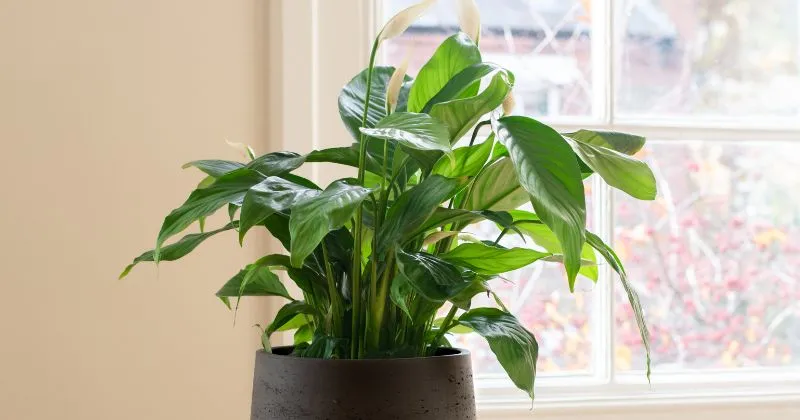
We start with the Peace Lily, a staple houseplant known for its striking white blooms and air-purifying prowess. Peace Lilies excels at removing ammonia, benzene, formaldehyde, and trichloroethylene – chemicals commonly found in cleaning chemicals and cosmetics. With minimal upkeep and the ability to thrive in low light, the Peace Lily is a popular choice for novice plant parents.
The Peace Lily also boasts a knack for alerting you when thirsty, an invaluable trait for a houseplant. When it needs water, the leaves will begin to droop, signaling you to give it a drink. Just be cautious if you have pets – this plant can be harmful if ingested, so it’s best to keep it away from curious cats and dogs.
2. Snake Plant
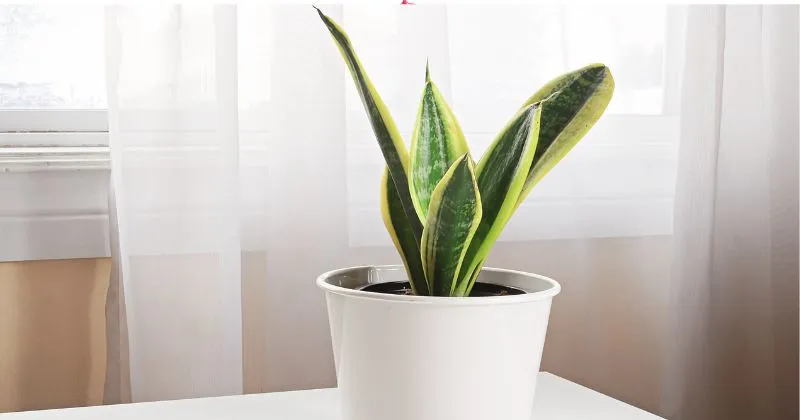
Next on our list is the Snake Plant, also known as ‘Mother-in-Law’s Tongue.’ Renowned for its durability and minimalistic look, it’s a plant that even the most forgetful caretakers can keep happy. This hardy tropical species is excellent at filtering out formaldehyde and benzene, two common household toxins that can have serious health effects.
What’s particularly impressive about the Snake Plant is its ability to produce oxygen. Unlike most plants, it does so at night. This makes it ideal for bedrooms, ensuring you breathe clean air around the clock.
3. Spider Plant
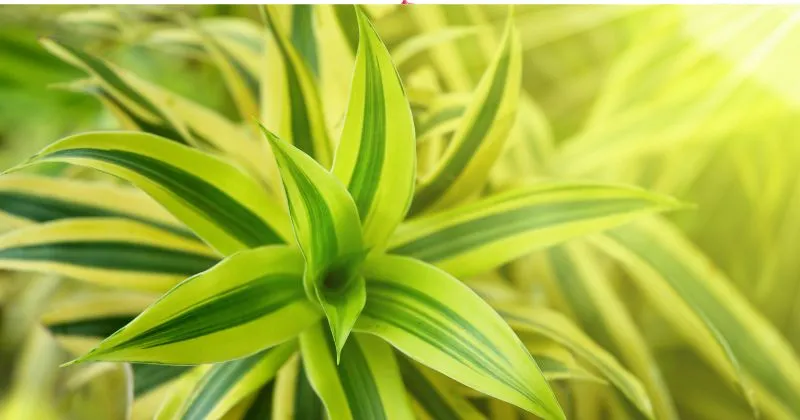
The Spider Plant is a popular houseplant known for its long, arching green leaves with white stripes. It gets its name because the small baby plants, or “spiderettes,” dangle down from the mother plant, looking like little spiders.
Spider Plants are excellent at removing harmful toxins from the air, such as formaldehyde and xylene. These toxins can come from car exhaust, paint, and household cleaning products. Having a Spider Plant in your home can reduce the amount of these toxins in the air.
Spider Plants prefer bright, indirect light but can also tolerate lower light conditions. Avoid placing them in direct sunlight, as it can scorch their leaves. Water your Spider Plant when the top inch of soil feels dry. Be careful not to overwater, as this can cause root rot. They like to be kept slightly moist but not soggy. Spider Plants are relatively low-maintenance. Remove any brown leaves and trim the spiderettes if they get too long. You can also repot the plant every few years to keep it healthy.
4. Aloe Vera
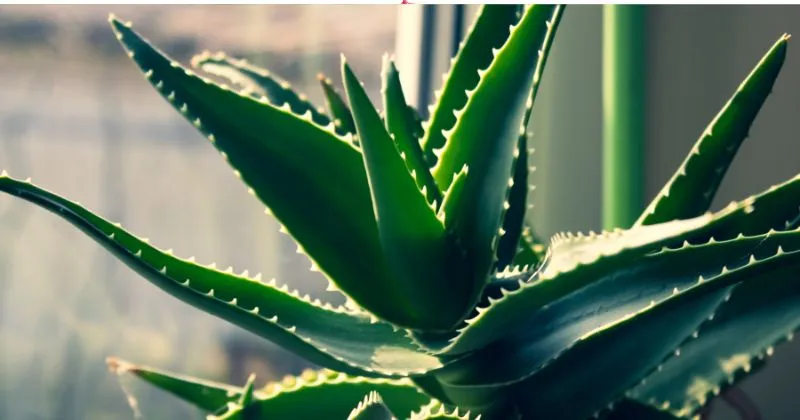
A household name for its medicinal properties and succulent leaves, Aloe Vera, is much more than a sunburn soother. It’s also an excellent air purifier, specializing in clearing pollutants from harsh chemical cleaning products.
With its rosettes of succulent leaves and striking bloom stalks, Aloe Vera’s aesthetic appeal is undeniable. It’s also a cinch to care for – give it plenty of sunshine and don’t overwater. Aloe Vera is a must-have in the kitchen or near the windows –by choosing a sunny spot, you’re ensuring its health and improving the air quality in the heart of the home.
5. Boston Fern
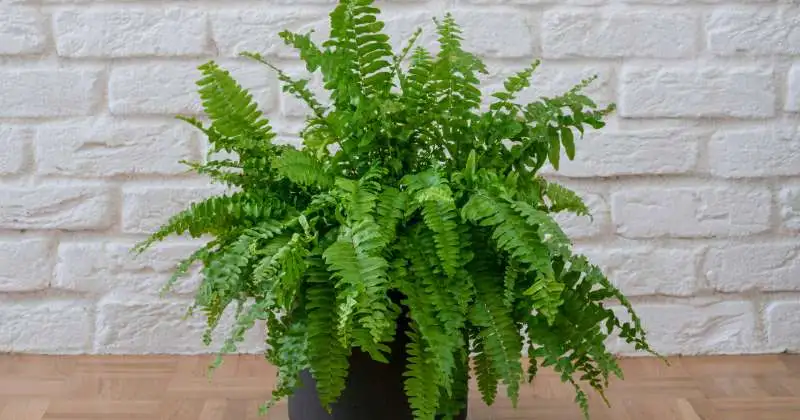
Rounding out our top five is the classic Boston Fern, a popular choice for those seeking to add a touch of nature to their homes. These delightful, feathery fronds are experts in cleansing the air by filtering out formaldehyde and xylene – a bonus for allergy sufferers and those sensitive to air quality.
Keep your Boston Fern happy with a bit of humidity – a regular misting or placing a tray of water with pebbles underneath for moisture can go a long way. This plant can also thrive in cool temperatures, making it perfect for those colder corners of your home that could do with a splash of green.
6. Rubber Plant
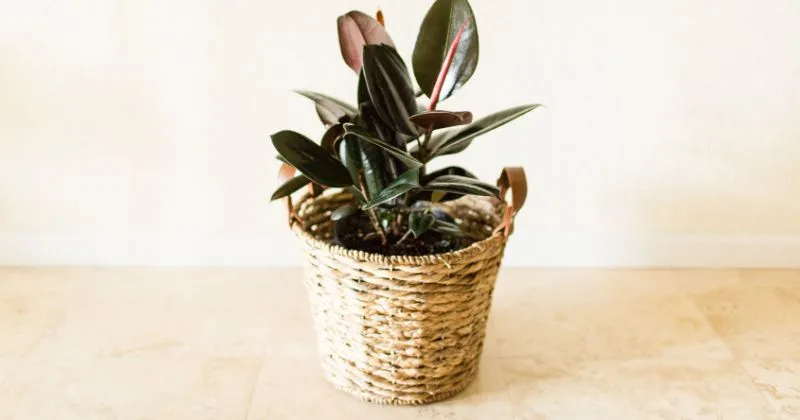
Remember those deep, rich green leaves your grandma adored? Those belonged to none other than the rubber plant. This tropical species is an excellent defense against Benzene, a toxin in furniture wax, polishes, and paints. With a good balance of light and water, these low-maintenance leaf clads can grow impressive sizes, making them a statement piece for any room.
7. Areca Palm
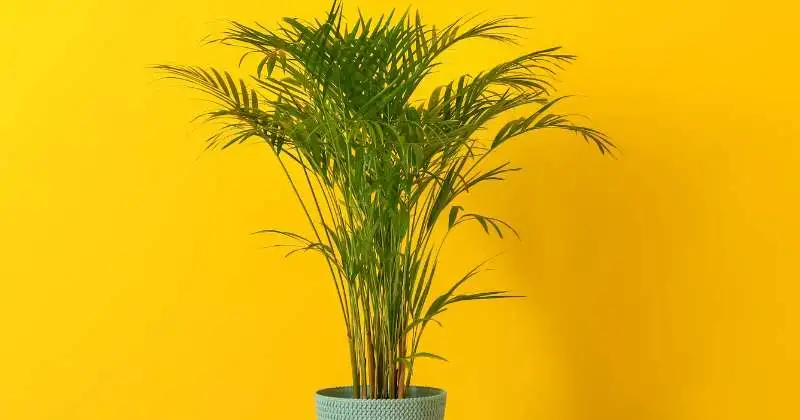
With its elegant feathery fronds, the Areca Palm is a master at dusting the air. It’s especially effective at removing ammonia, a by-product of excrement and cleaning products. This is why it’s often recommended for pet-friendly homes. Bright but indirect light is its jam, and if you’re kind enough to keep its fronds misted, it’ll humbly wave its thanks.
8. English Ivy
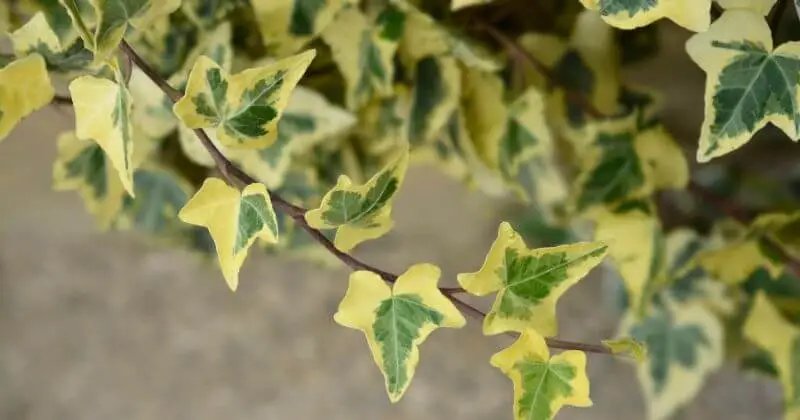
If you want an A-list plant that snags airborne fecal particles and reduces mold in the air, the English Ivy is your celeb. This climber loves to trail or climb, giving you creative freedom in home decor. Remember, it’s a natural climber and might need a little trimming not to take over.
9. Bamboo Palm
The Bamboo Palm, a native to Mexico and Central America, is a triple threat against toxins. It tackles Trichloroethylene, Benzene, and Formaldehyde—nasties commonly found in window cleaners, soaps, and surface treatments. Give it some light-to-medium shade, and it’ll grow tall and proud.
10. Gerbera Daisy
For floral-shaped air purifiers, the Gerbera Daisy can’t be beaten. This beauty is the hero in removing the Benzene emissions from printing materials. It’s more high-maintenance than the others on our list, so if you’re into a bit of a challenge, this could be your green match.
11. Ficus
The Ficus family includes popular choices like the Weeping Fig and the Rubber Tree. These foliage-heavy plants are excellent at filtering harmful toxins like formaldehyde and benzene. Ficus plants love a bright, indirect light source, and they don’t mind a little soil moisture, but overwatering can lead to root rot. Keep them in spaces without too much temperature fluctuation, and they’ll reward you with cleaner air and lush green leaves.
12. Dracaena
If we keep score, Mother-in-Law’s Tongue (or Snake Plant) will take home the prize for resilience alone. Dracaena plants come in a wide variety, some with broad, colorful leaves and others with familiar, stiff, vertical spires. They’re champions at filtering out volatile organic compounds (VOCs). They can handle some neglect, making them perfect for the less-than-green thumbs among us. Just don’t leave them standing in water, as the rhizomes (root structures) can be prone to rot in soggy soil.
13. Philodendron
The heart-shaped leaves of the Philodendron make for a charming addition to any room, and their air-purifying properties are the real showstopper. They’re especially good with the nasty toxin Xylene found in paints, glues, and the unmentionable things we burn in our scented candles. This plant is perfect for those cozy corners where they can vine or trail, adding a whimsy to your space. But remember, they’re also toxic to pets and children, so place them wisely.
Final Thoughts-Best Indoor Air Purifying Plants
Bringing these air-purifying champions into your home is one of the easiest ways to improve indoor air quality. They work in silence and add a touch of elegance and tranquility to your living space. By choosing the right plant for your needs and following the care tips provided, you can enjoy the benefits of cleaner air and a healing and harmonious sanctuary.
Whether adorning a study, perched on a sunny kitchen windowsill, or thriving in a dedicated garden area, these plants can make a noticeable difference in the air you breathe. Fear not for those who may be new to plant care; these species are known for their robustness and are forgiving of occasional neglect. Start with a single botanical guardian or create a verdant indoor garden with a mix of these plants – the choice is yours and your lungs will thank you.
Frequently Asked Questions
Why should I consider using indoor plants for air purification?
Indoor plants can effectively remove toxins and pollutants, improving indoor air quality. They act as natural air purifiers, enhancing occupants’ overall health and well-being.
How do indoor plants purify the air?
Indoor plants purify the air through a process called phytoremediation. They absorb harmful gases such as formaldehyde, benzene, and xylene through their leaves and roots, converting them into oxygen and other harmless byproducts.
How many indoor plants do I need for effective air purification?
The number of plants needed depends on factors such as the size of the room and the types of pollutants present. As a general guideline, aim for one medium-sized plant (6-8 inch pot) per 100 square feet of indoor space for optimal air purification.
Can indoor plants eliminate indoor air pollutants?
While indoor plants can significantly reduce indoor air pollutants, they may not eliminate them, especially in spaces with high pollution levels. Using a combination of plants and other air purification methods, such as ventilation and air purifiers, can maximize the effectiveness of indoor air purification.
Do indoor plants require special care for air purification purposes?
Indoor plants require regular care, such as watering, proper lighting, and occasional pruning, to maintain their health and effectiveness in air purifying. Providing optimal growing conditions ensures that plants can continue to remove pollutants efficiently.
Can indoor plants improve my overall health?
Yes, indoor plants not only purify the air but also have been shown to reduce stress, boost mood, and increase productivity. Having indoor plants can contribute to a healthier indoor environment, improving overall well-being.
Are there any indoor plants that are not suitable for air purification?
While most indoor plants contribute to air purification to some extent, certain plants may not be as effective as others. Plants requiring high maintenance or minimal foliage may not provide significant air purification benefits compared to hardier, leafier varieties.
Are indoor plants safe for pets and children?
While many indoor plants are safe for pets and children, some varieties may be toxic if ingested. It’s essential to research each plant’s toxicity level and keep poisonous plants out of reach of pets and children. Additionally, placing plants in sturdy, stable pots can prevent accidental tipping or ingestion of soil.
Can indoor plants reduce indoor humidity levels?
Yes, indoor plants can help regulate indoor humidity levels by absorbing excess moisture through their leaves and releasing it into the air through transpiration. However, the impact on humidity levels varies depending on factors such as plant type and indoor space size.
- Top 12 Essential Gardening Tools for Beginners - June 19, 2024
- Top Gardening Tips for Beginners in 2024 - June 8, 2024
- How To Grow And Care For Peace Lily - April 28, 2024

